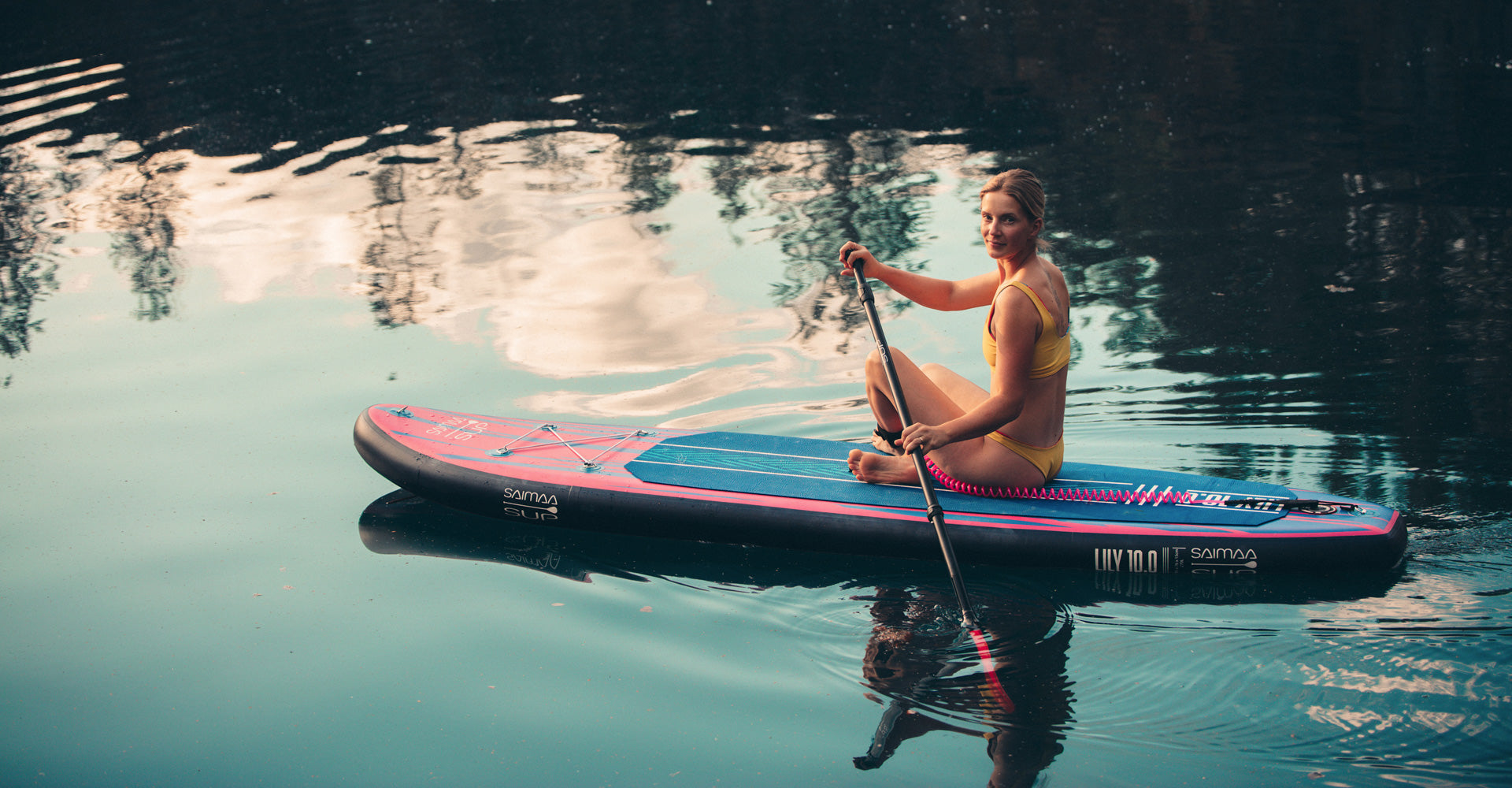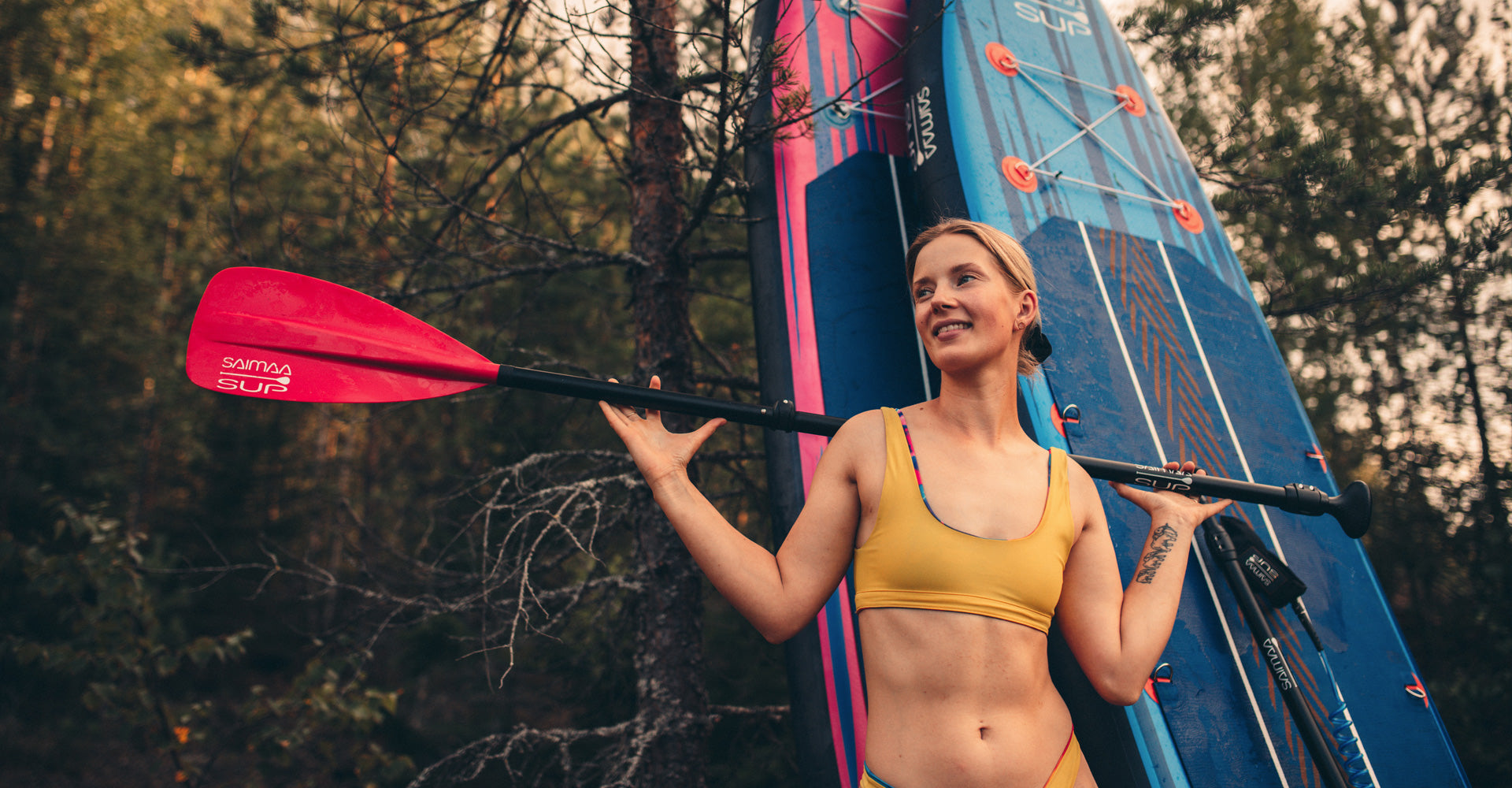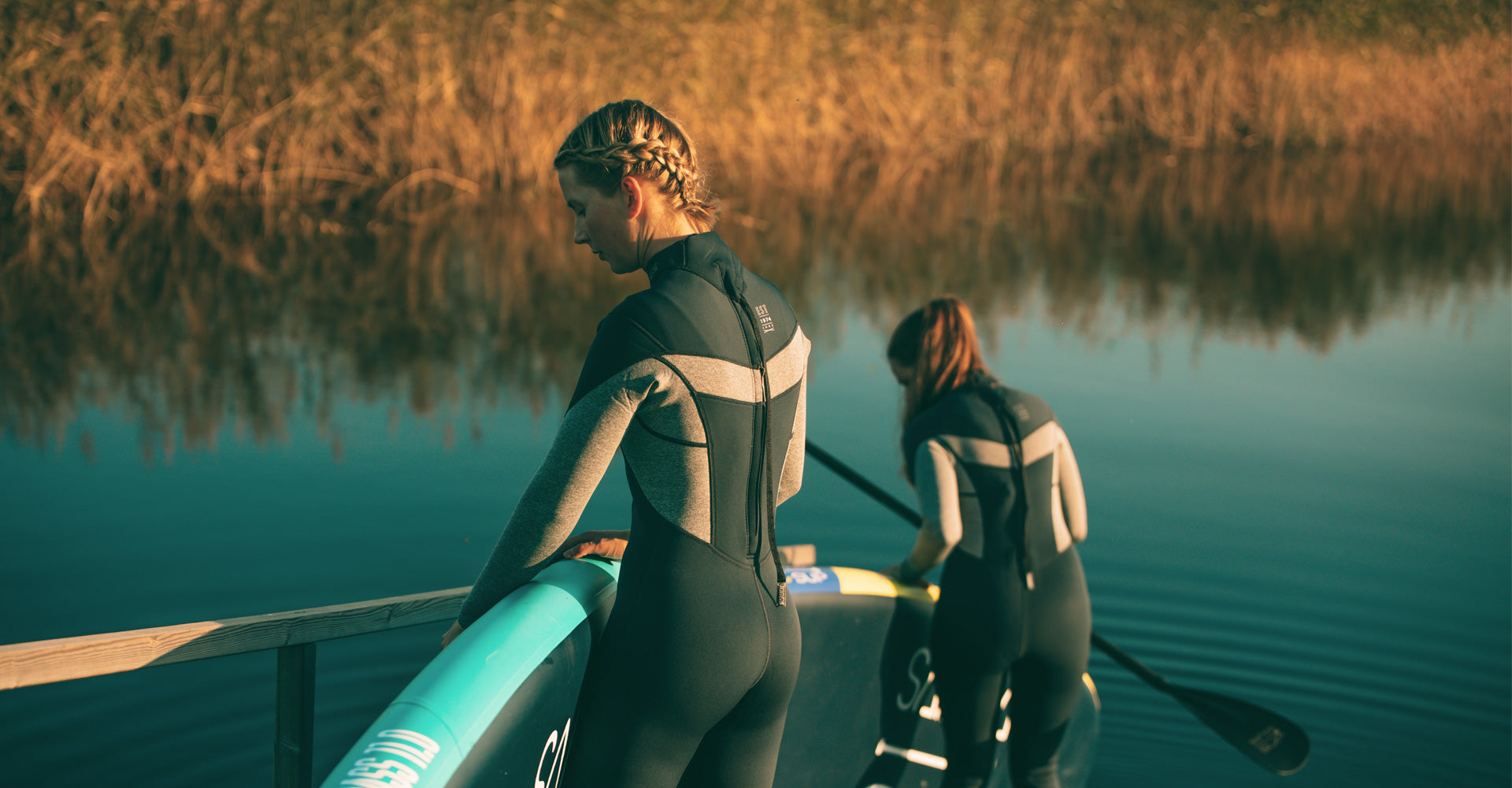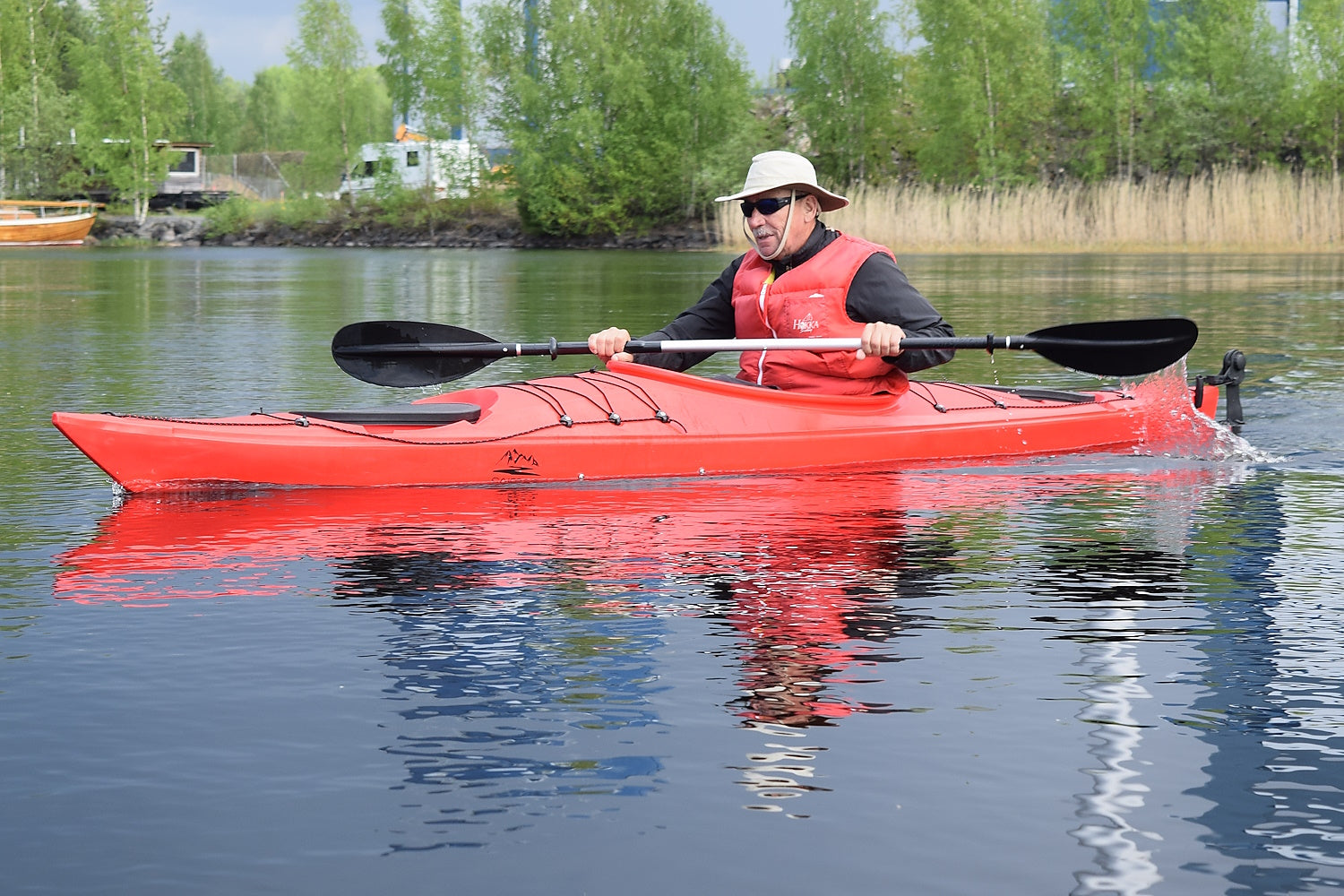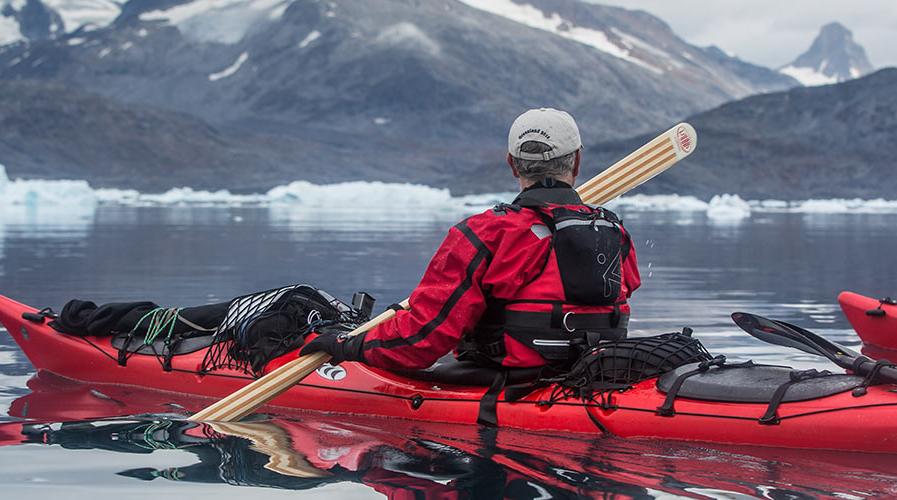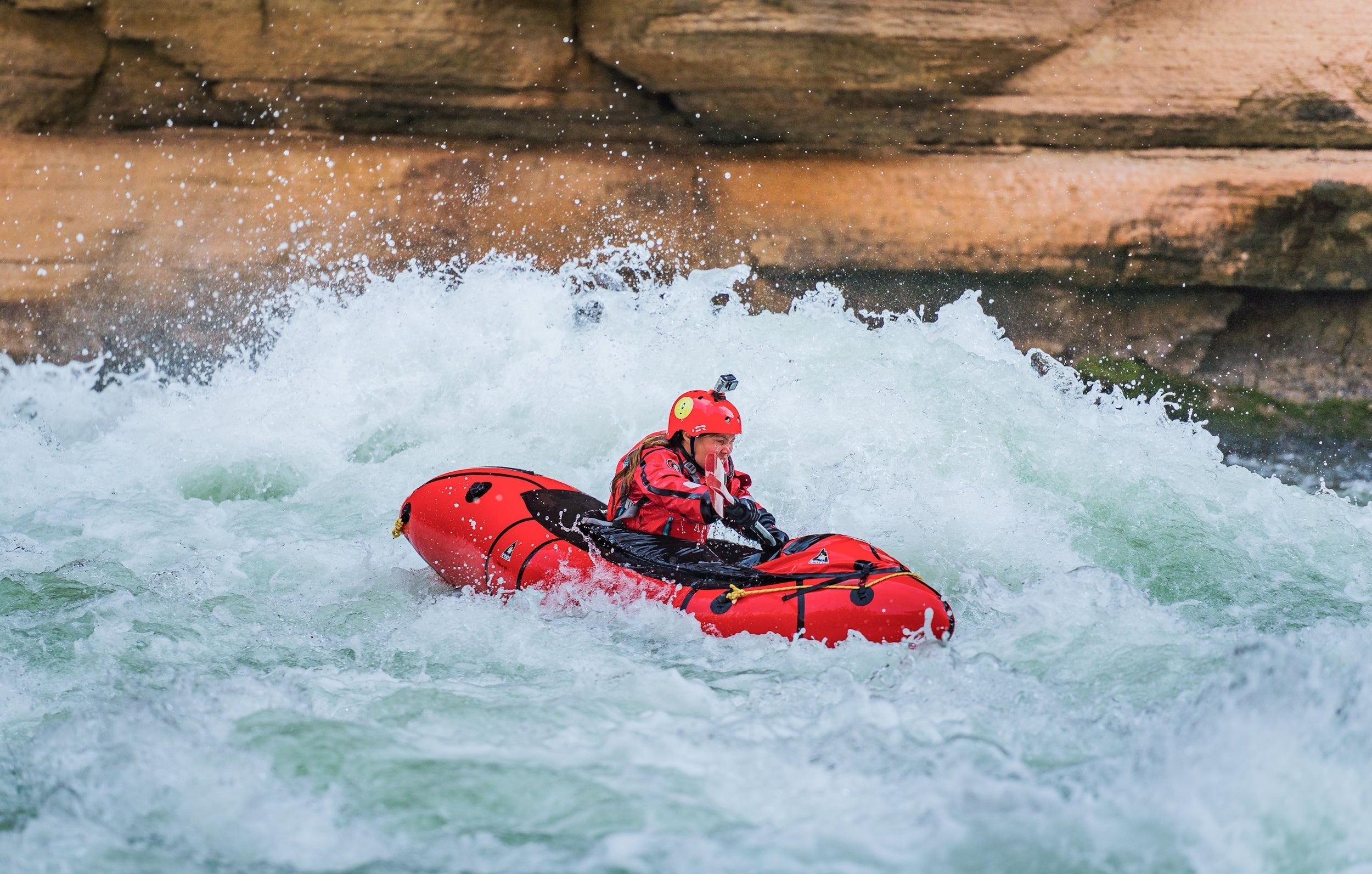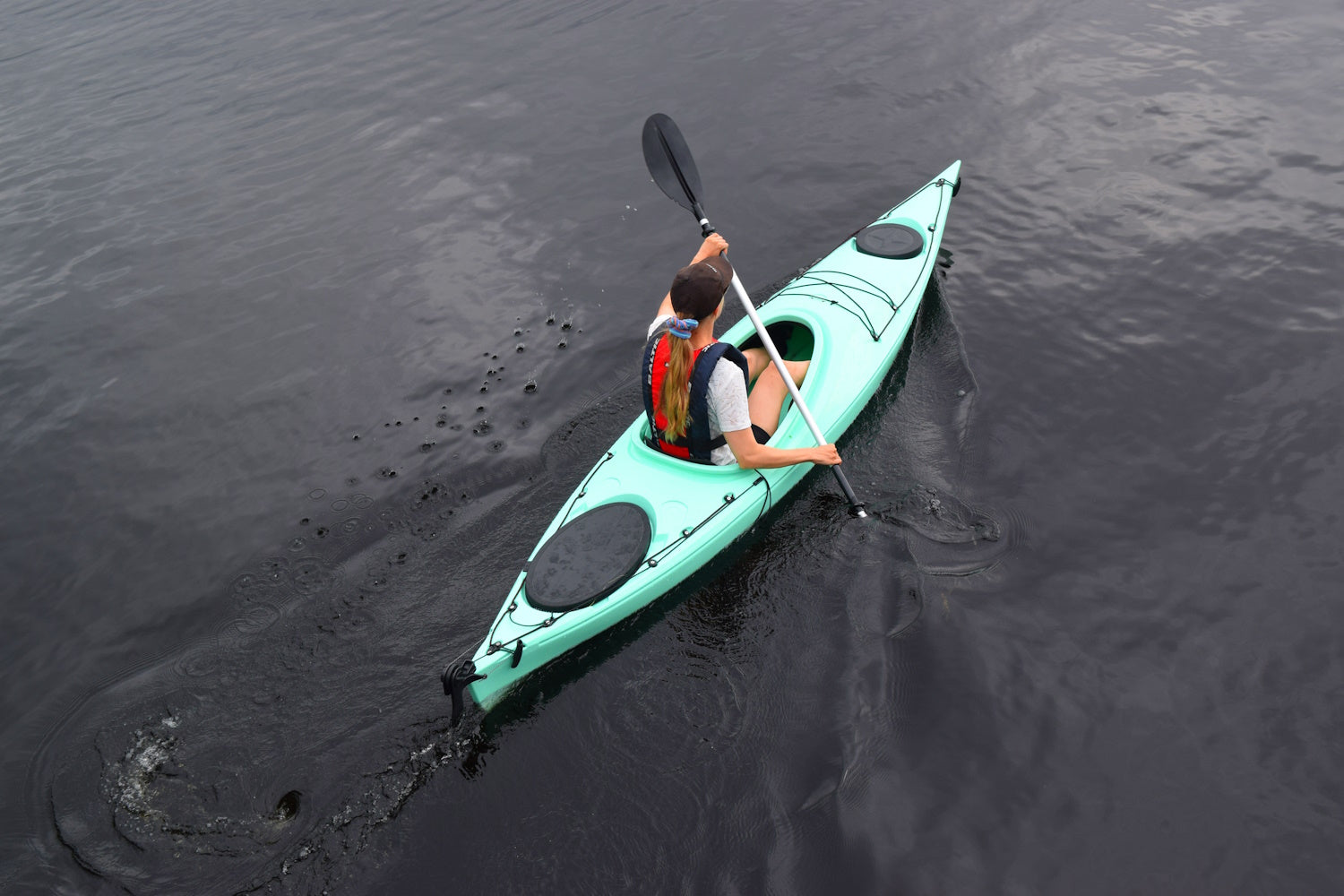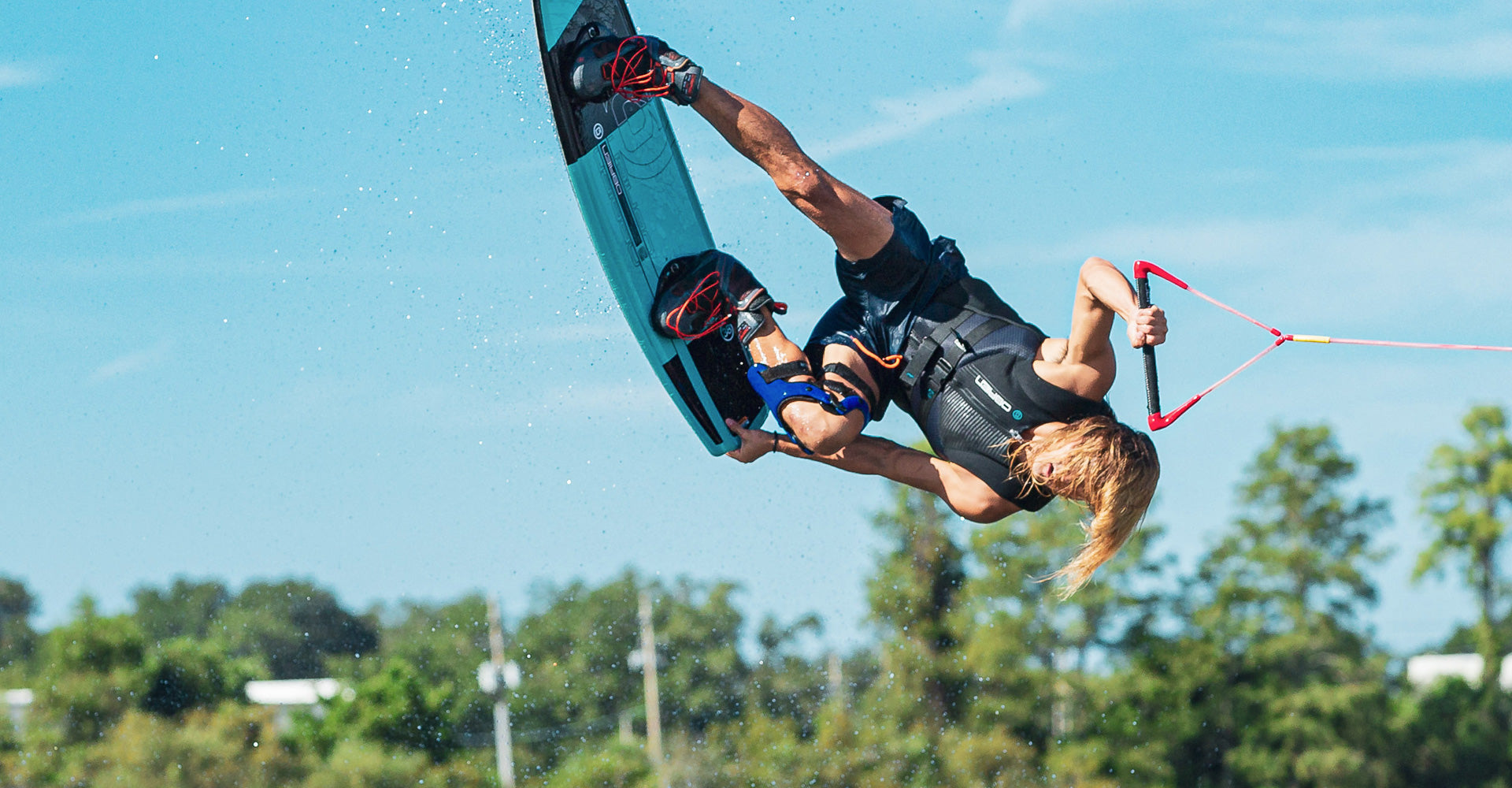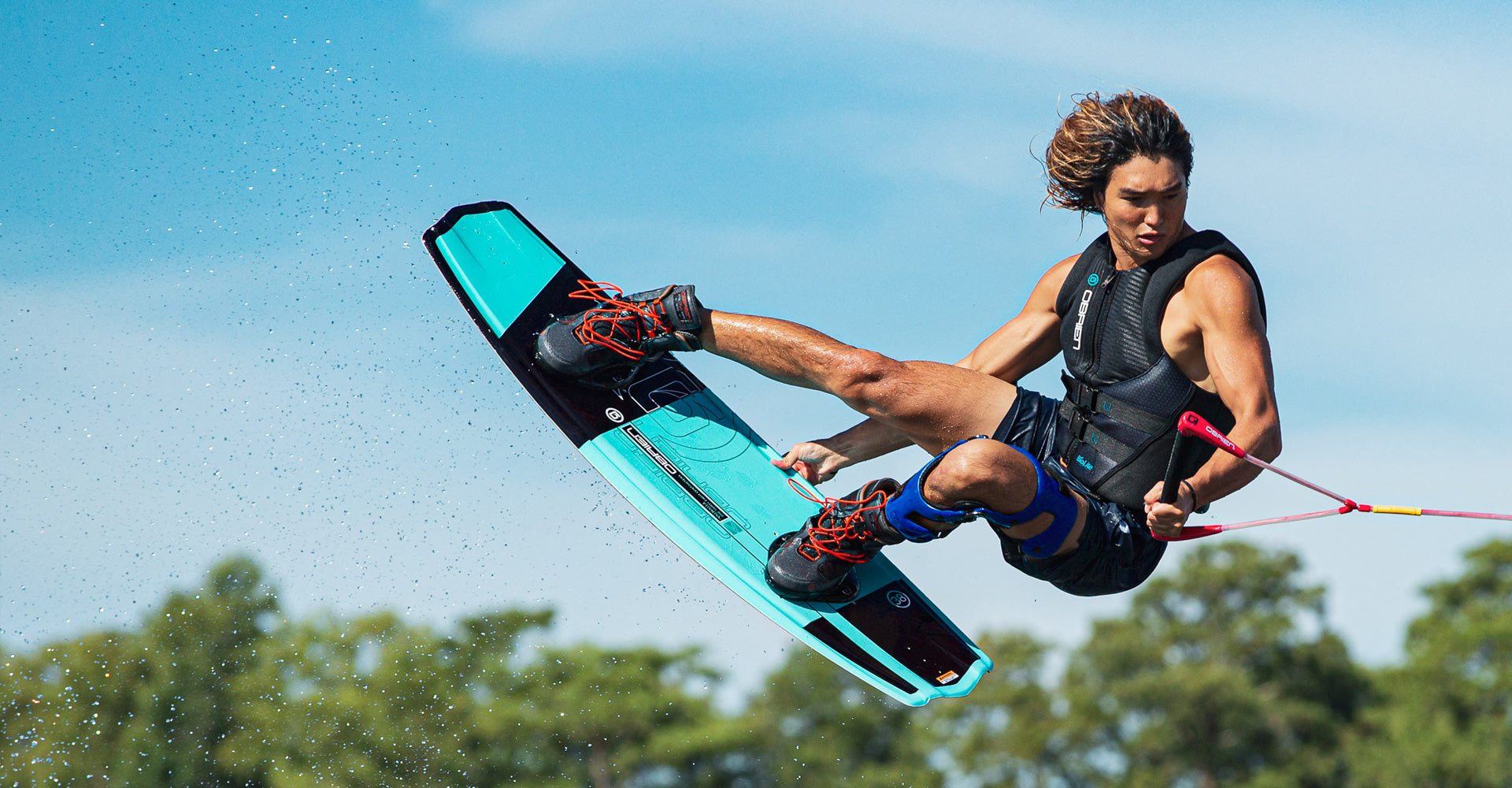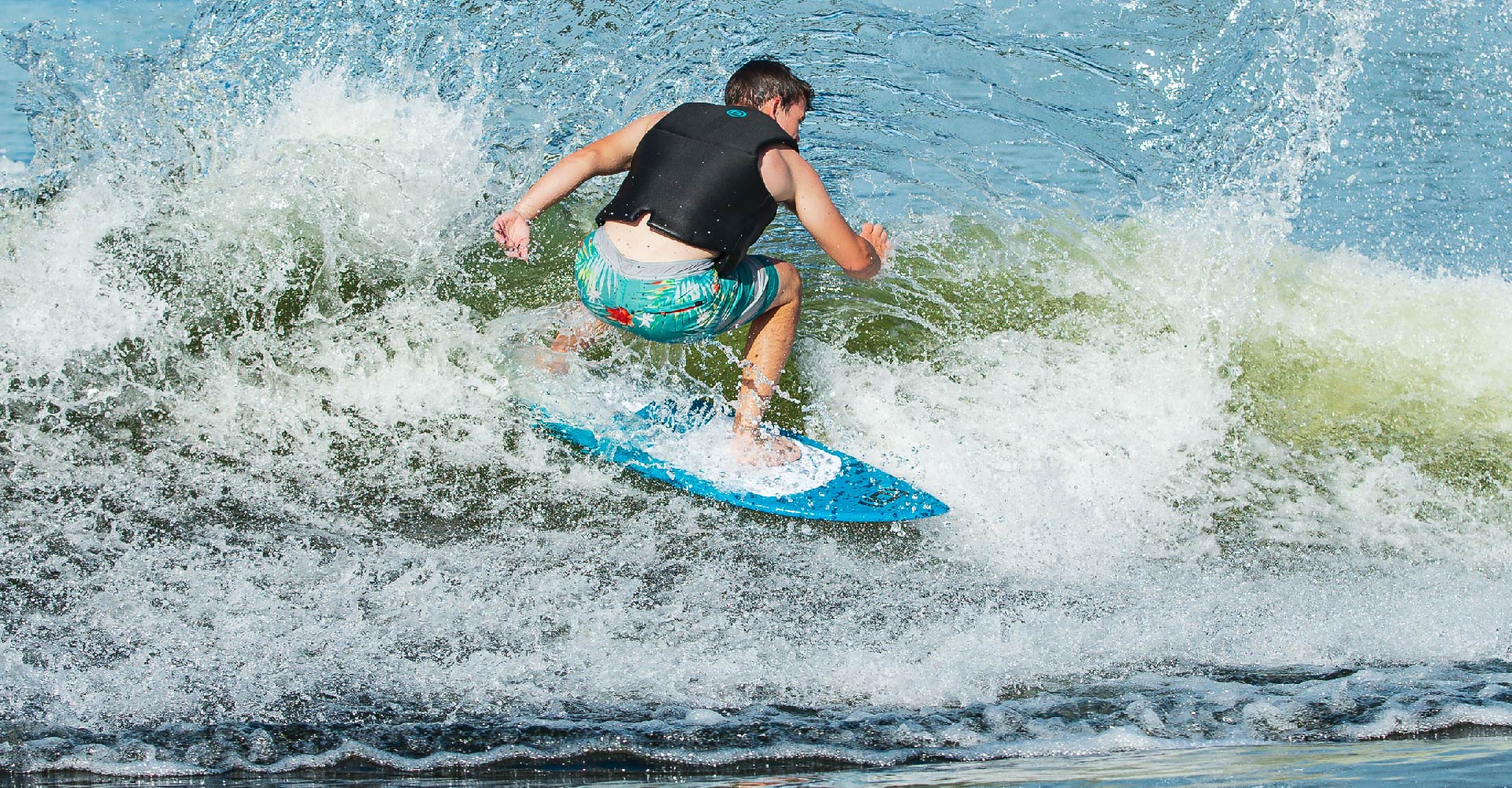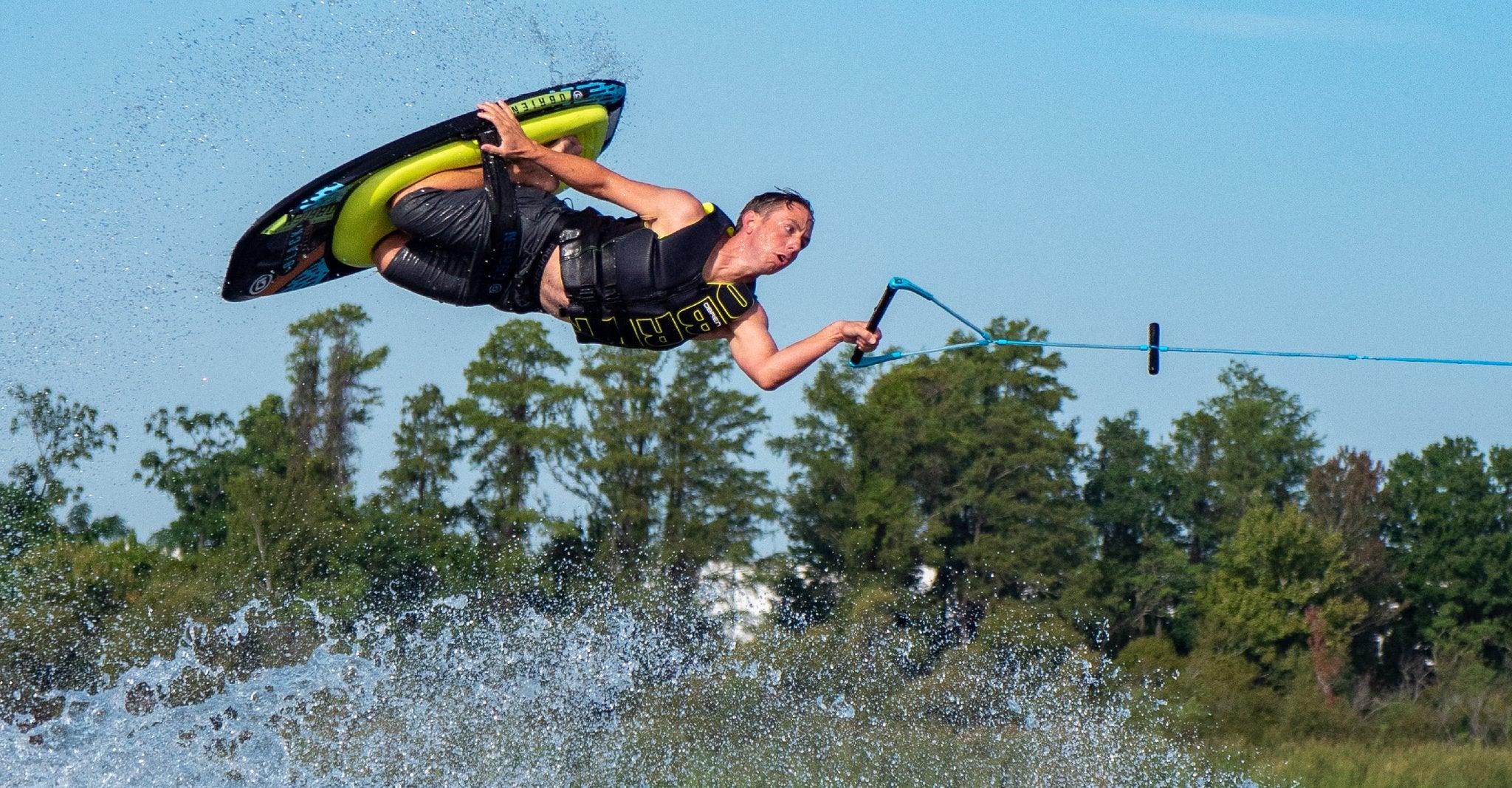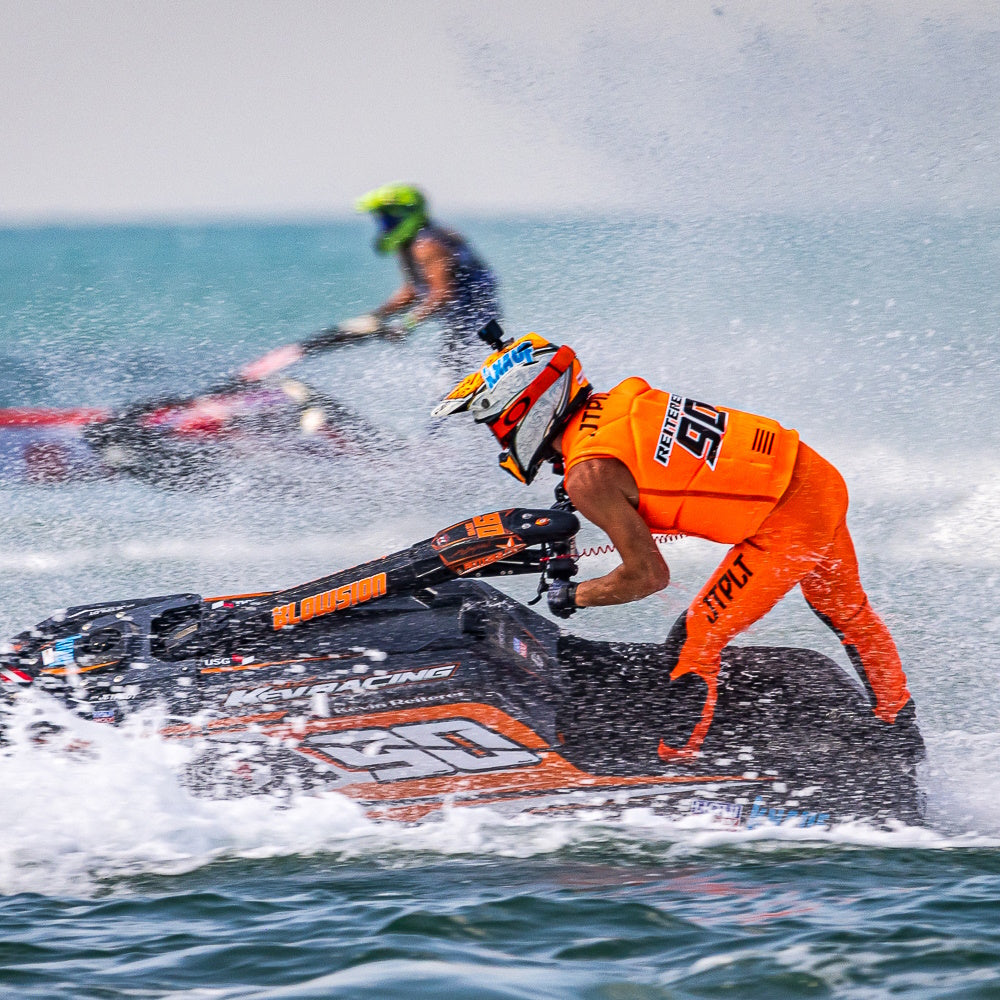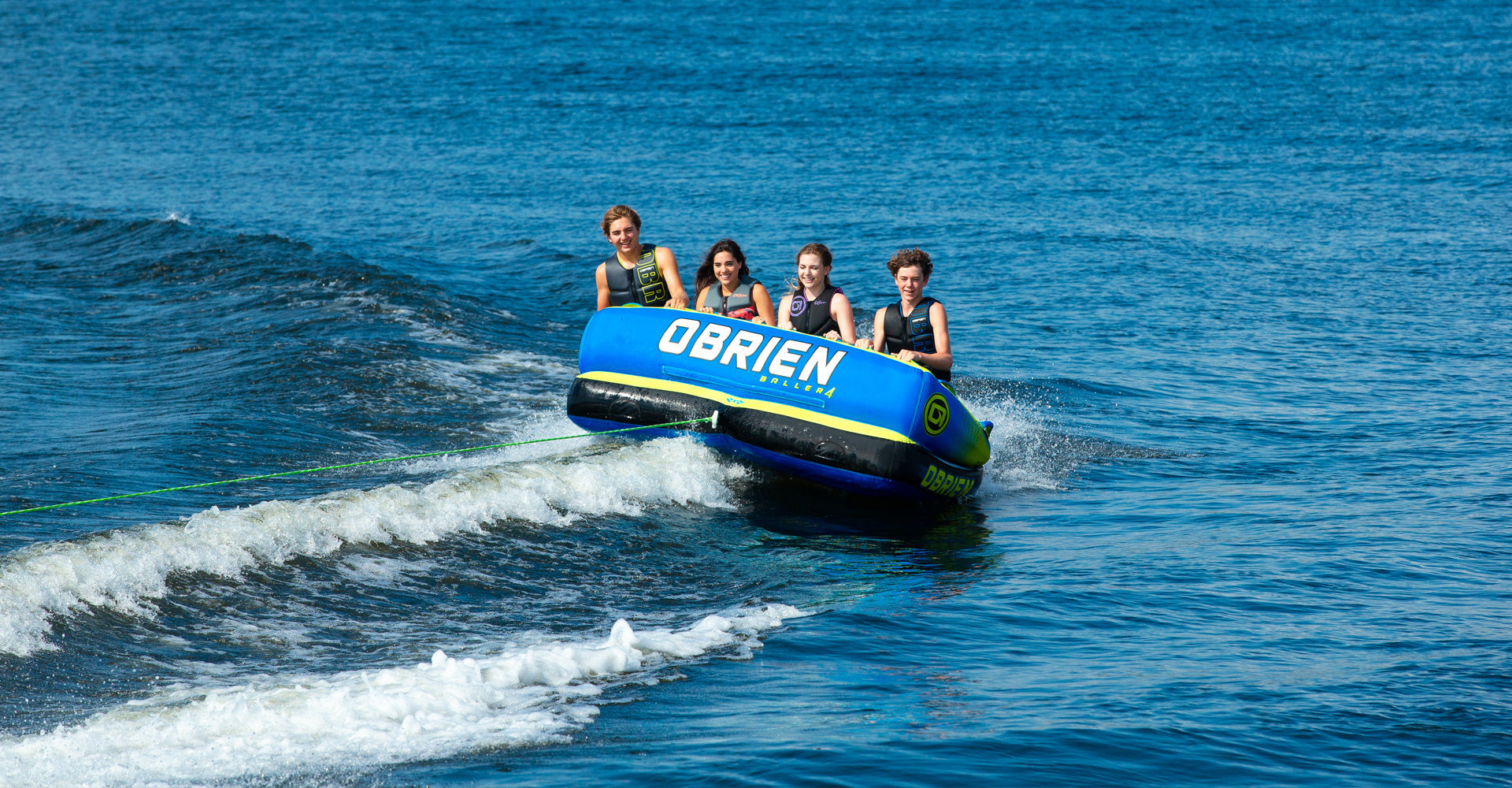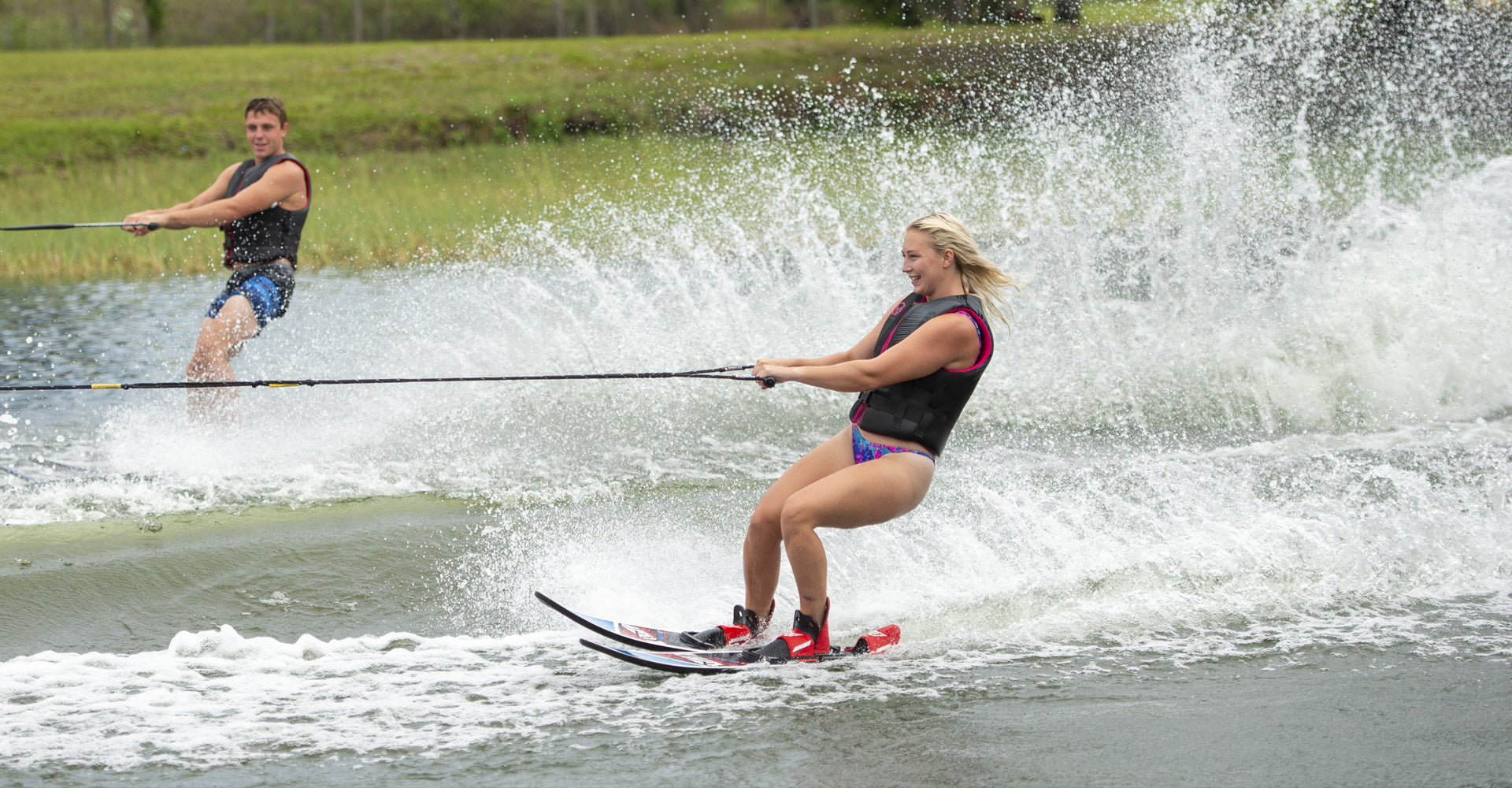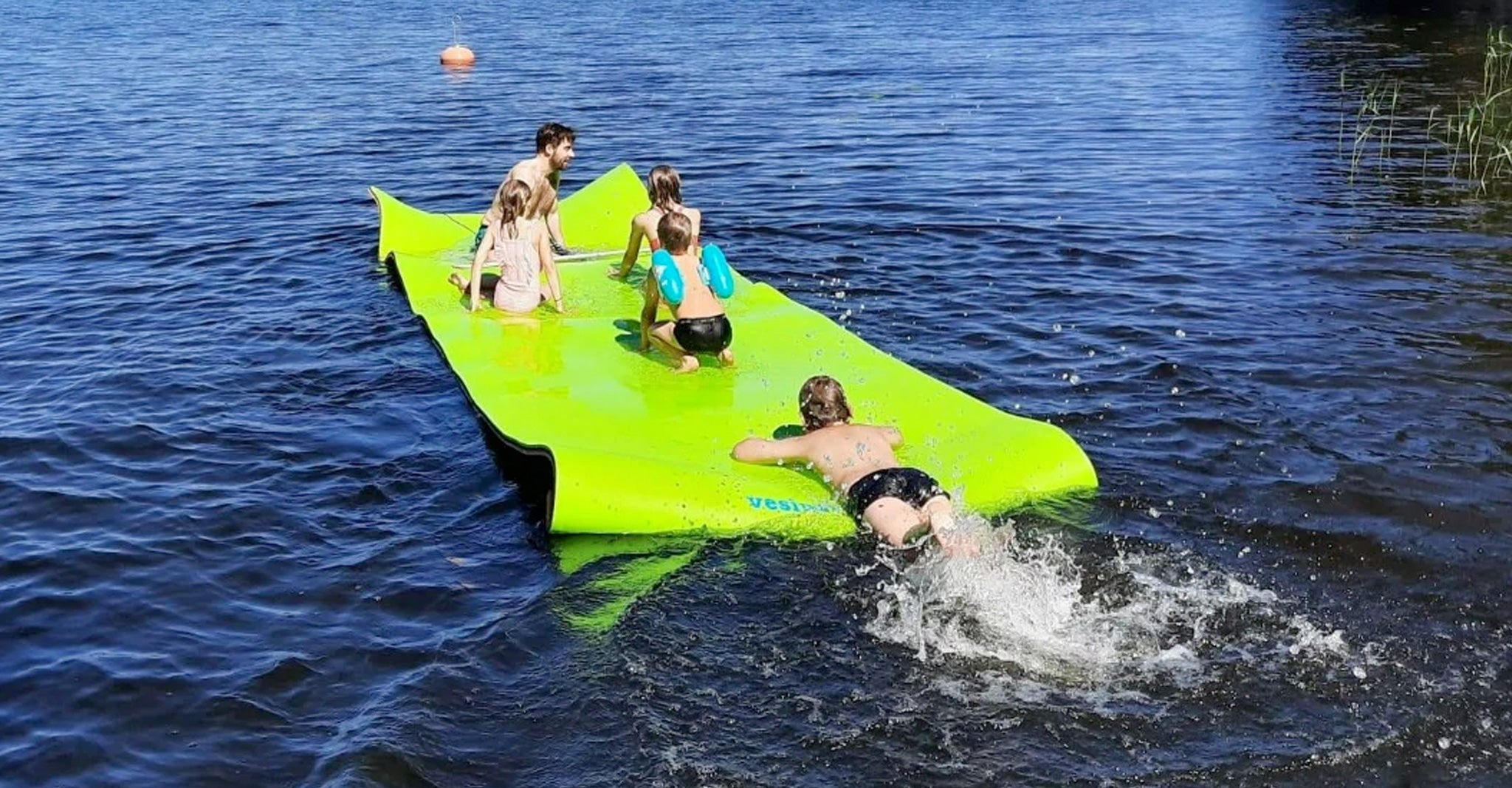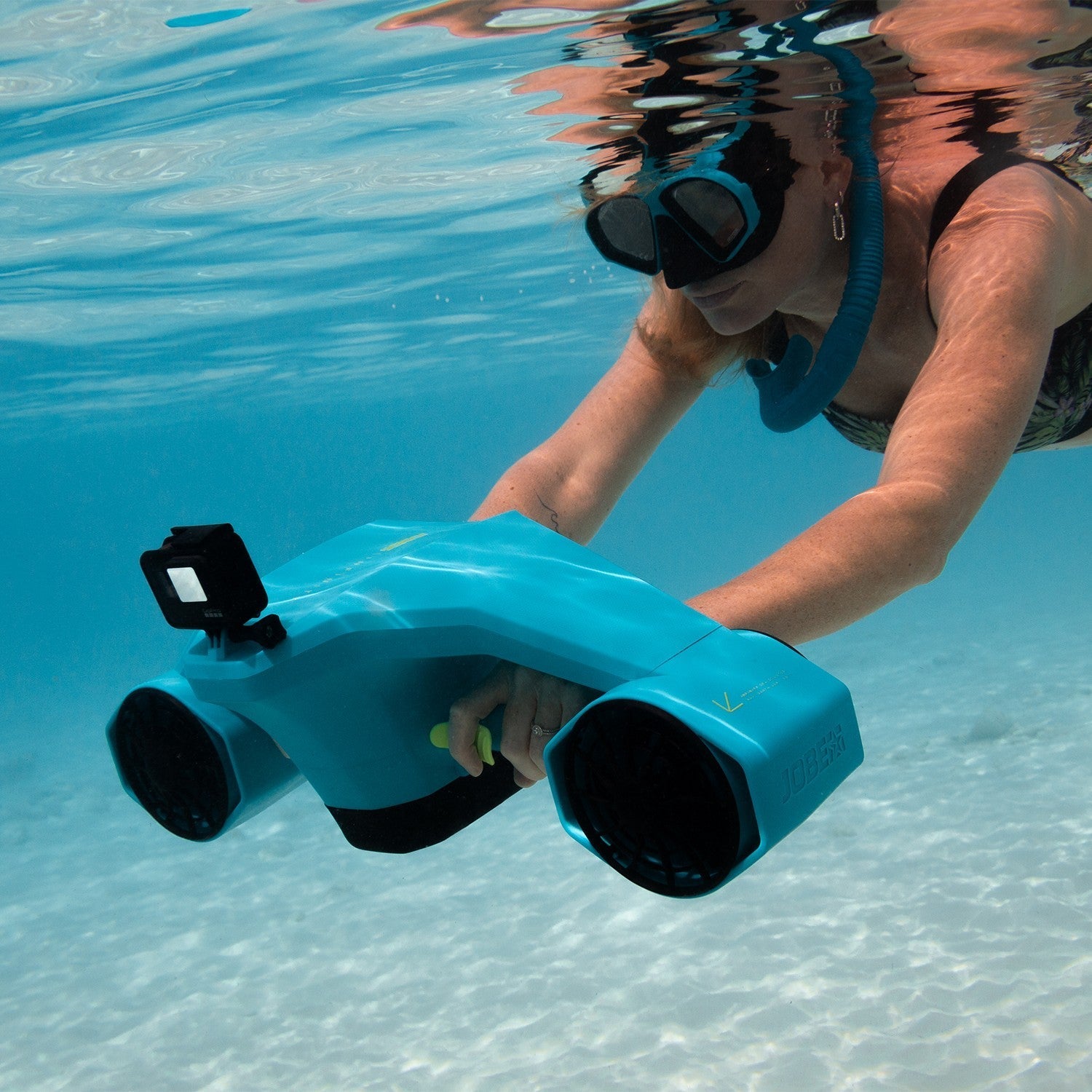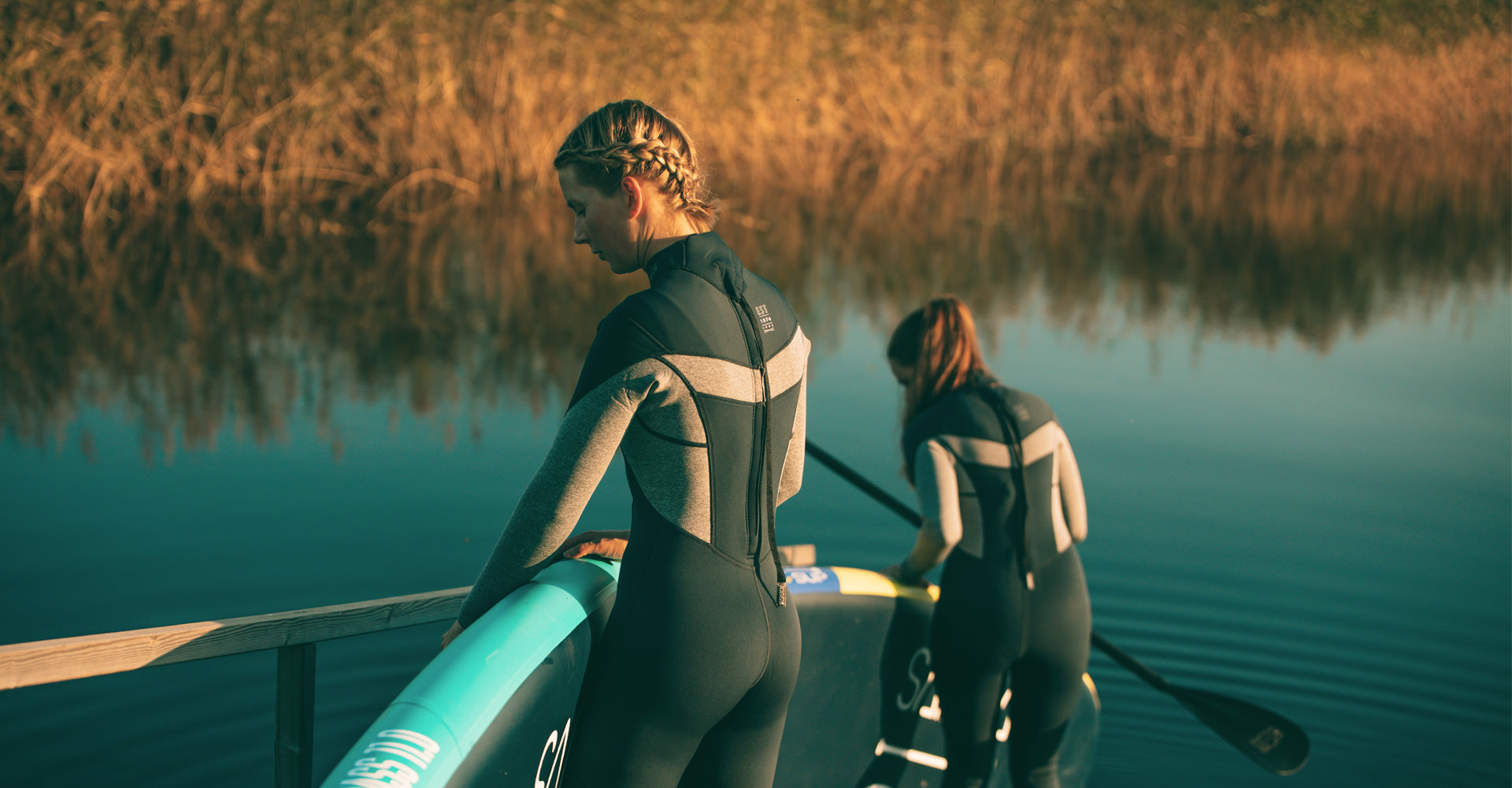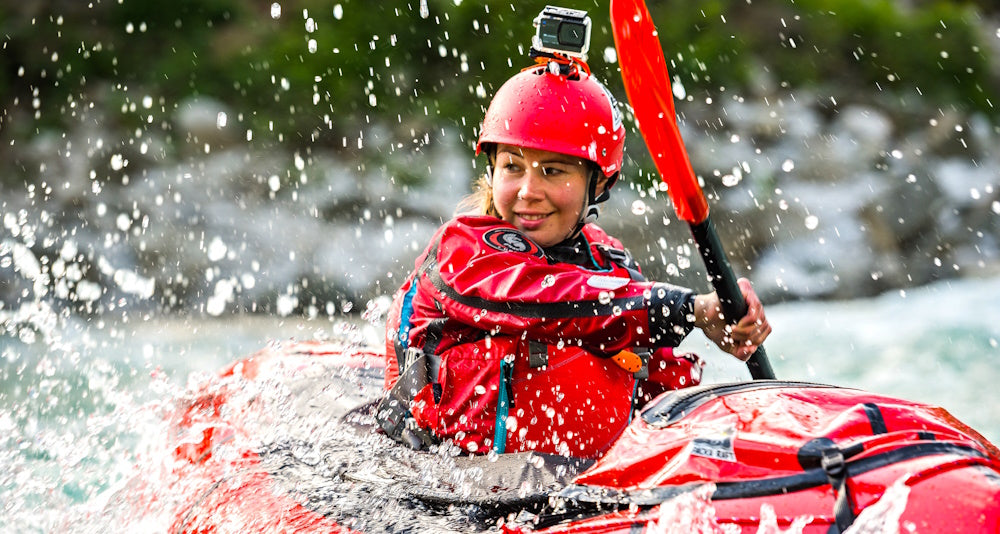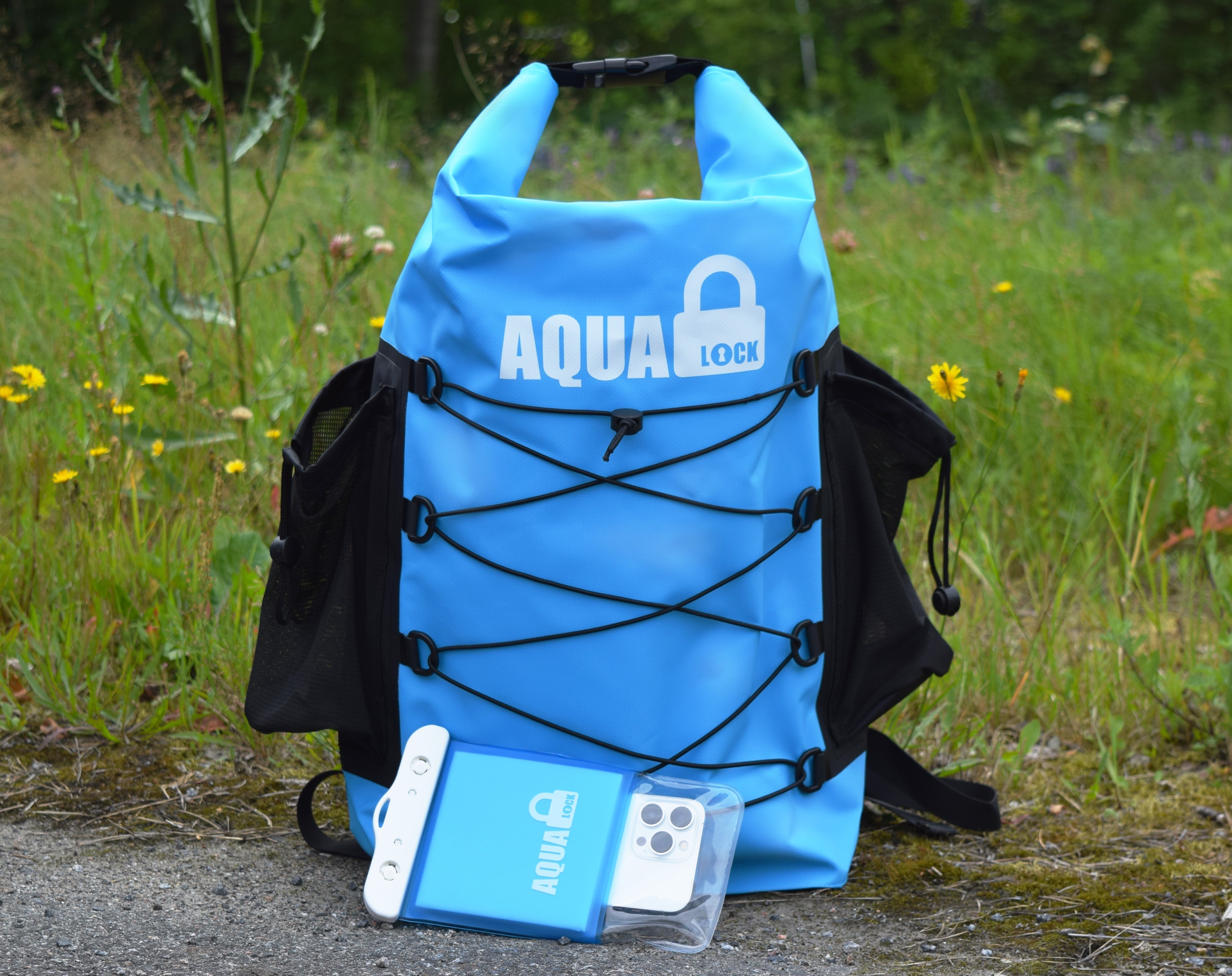Instructions for starting wakeboarding
How to stand up on a wakeboard and what the correct pulling speed should be are common questions for beginners. This guide provides practical tips for getting started. You don’t need a large boat to wakeboard—an ordinary fishing boat is enough. Even a 20 hp engine can pull a 100 kg rider up onto the board. There are three main ways to start: from the water with the board under you, from the water with the board beneath the surface, and from a dock start.
Starting from the water with the board partially on the surface:
Hold the board sideways relative to the boat, with 5-10 cm of the board's side edge peeking through the water. Keep your feet placed securely in the bindings and your arms straight, holding the tow handle. As the driver gradually increases speed and the board begins to gain tension on the water, place slightly more weight on your back foot and angle your front foot toward the boat to bring the board into a parallel position behind it.
You can help the board rise more smoothly by gently pulling the handle toward you as you come up. Once the board is planing (gliding on the surface), shift your weight toward the center (maintaining a slight back-foot bias for stability), push your hips forward, keep your arms straight, and settle into a balanced riding stance.
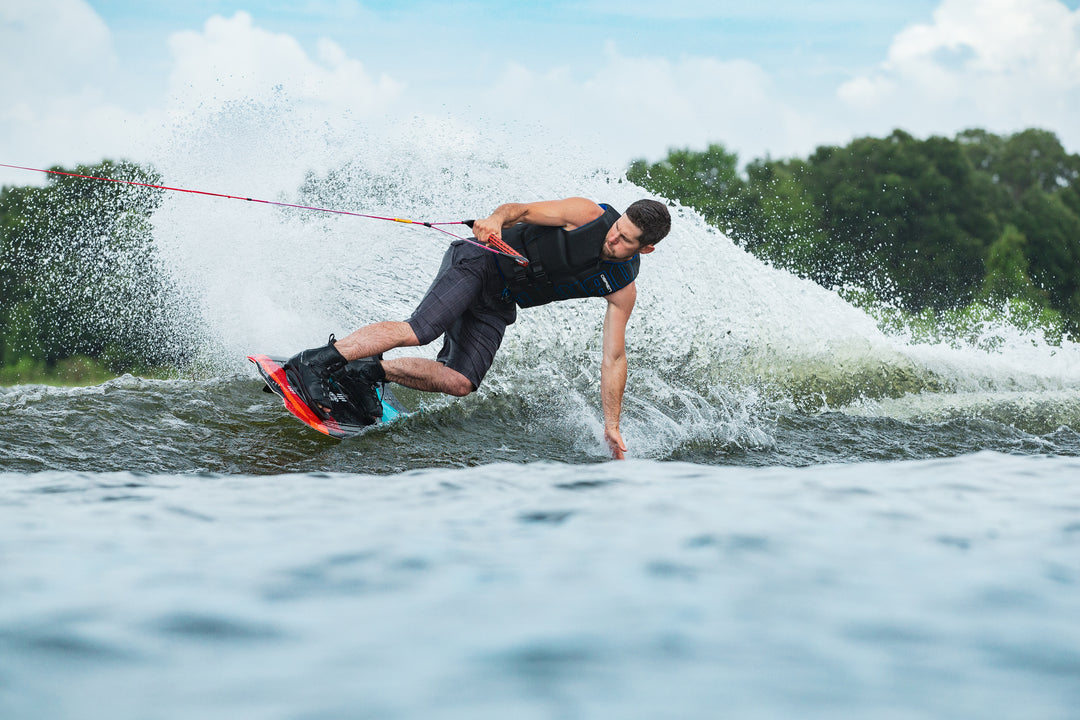
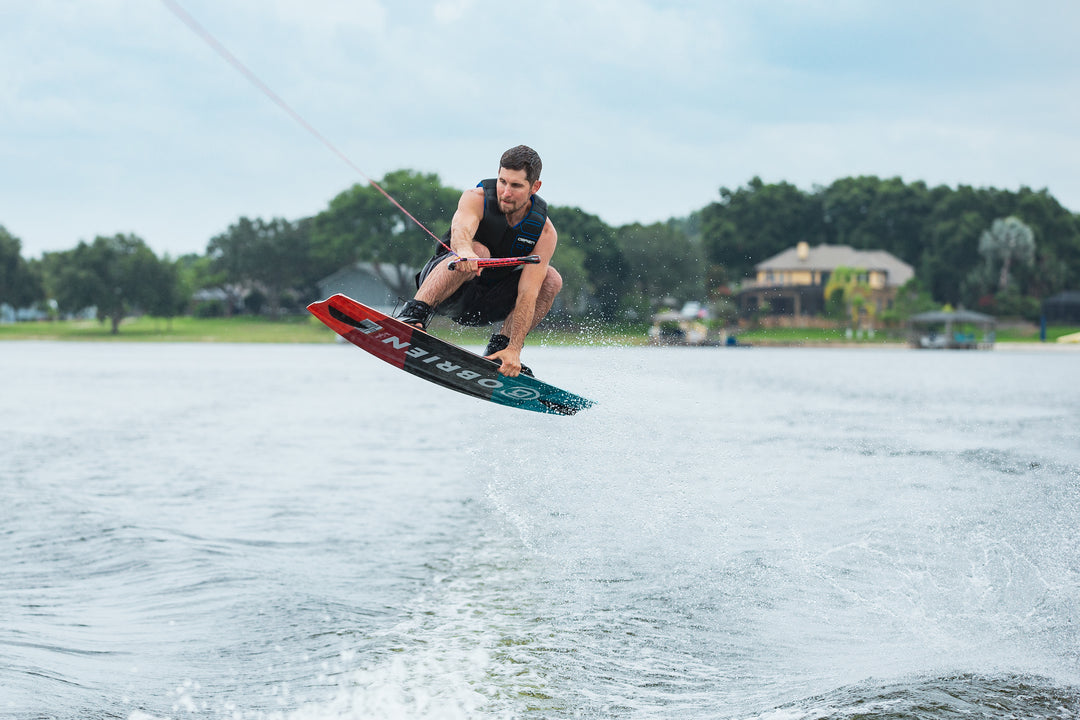

Start standing on the board with it held sideways to the boat. Keep the front edge of the board slightly higher than the back, so your toes are about 5 cm higher than your heels. Your body should be in the water up to around chest height. Your legs can be almost straight, but avoid locking your knees. Hold the tow handle with your arms straight and signal the driver when you’re ready.
As the driver gradually increases throttle, the board will begin to rise toward the surface. When you feel the lift, rotate the board so it aligns with the boat’s direction of travel. Push your hips forward, keep your arms straight, and settle into a balanced stance to enjoy the ride.
Launching from a dock is recommended only for experienced riders—always wear a helmet. Stand at the edge of the dock with your board positioned sideways relative to the direction of travel. The boat driver should begin to move very slowly, just enough to start taking slack out of the tow rope. When the rope is almost tight (about 30 cm of slack remaining), the driver applies firm throttle to bring the boat up to speed.
At that same moment, the wakeboarder jumps forward off the dock into the water, rotating the board so it points in line with the boat’s direction. The board will begin planing immediately, allowing you to start riding without the usual water-drag phase.
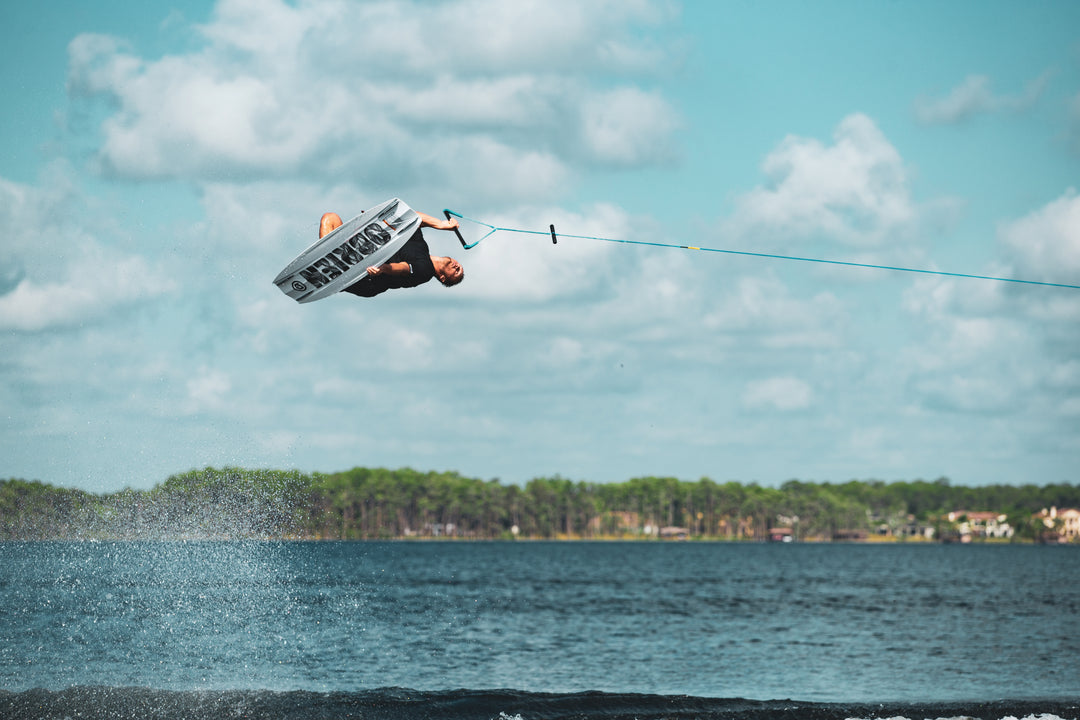
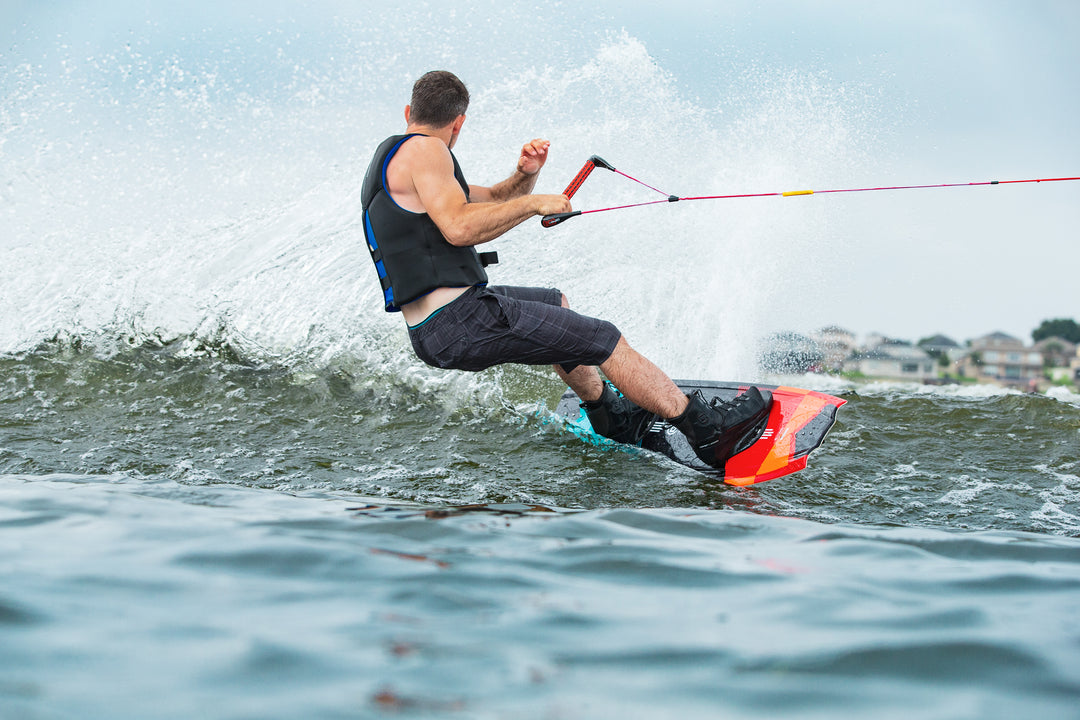
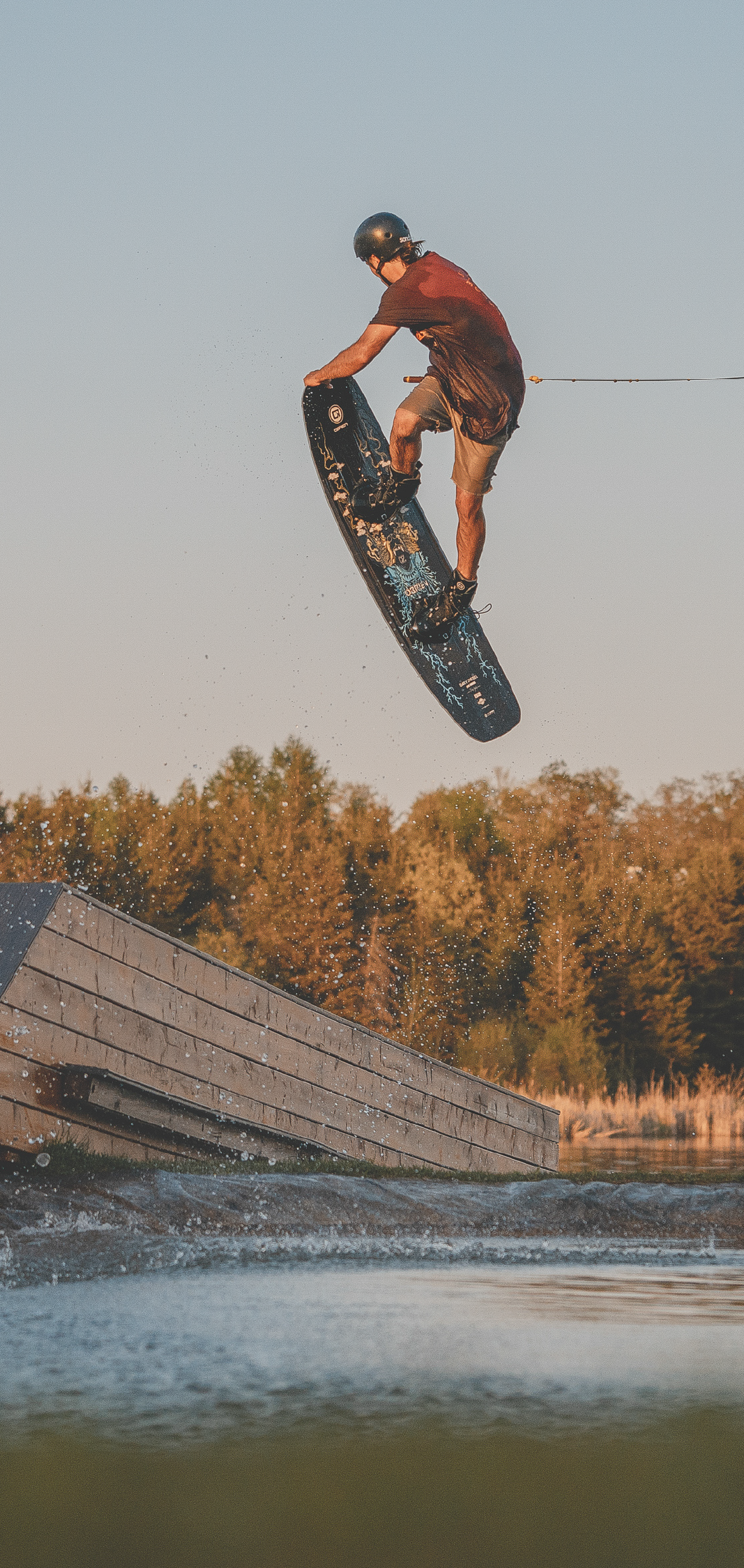
tips
Learn the correct riding position first. Keep your arms straight, hips forward, and a very light amount of weight on your back foot. Avoid letting your hips drop backward—this usually happens when you lose tension in the rope.
Get familiar with how your board responds. If your left foot is in front, shifting weight toward your toes will turn the board to the right. Shifting weight toward your heels will turn the board to the left. Practice riding smoothly over the boat’s wake, then gradually increase how tight and controlled your turns are.
If you want to learn to jump, start by practicing small hops without using the wake—just get comfortable getting a little lift. Then move to the wake. Begin slowly and increase speed gradually. Keep your core tight and the rope tension steady as you approach the wake. The lift comes from the middle of the board pushing against the wake; you don’t “push” with your legs. If your core collapses just before the peak of the wake, you will lose power and height.
Learn to ride with your non-dominant foot in front (switch stance). Practice until it feels natural. From there, start practicing 180° surface turns. Pay close attention to weight distribution so that you don’t catch your front or back edge, which will cause quick falls.
You should be able to perform 180° surface turns four ways:
Dominant foot forward, frontside 180
Dominant foot forward, backside 180
Switch stance, frontside 180
Switch stance, backside 180
Once these are controlled and consistent, move on to 360° surface rotations in all four variations. Mastering these movements on the surface gives you the foundation to take the same tricks into the air, leading naturally into more advanced trick progression.


